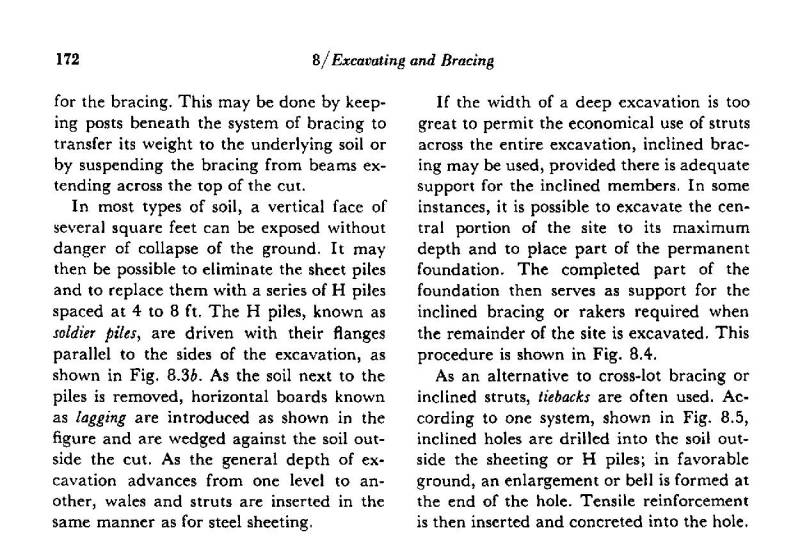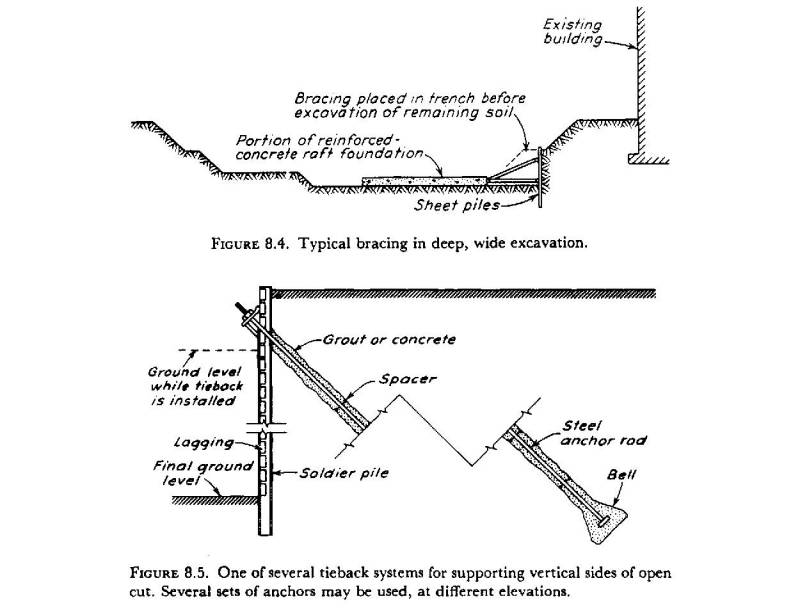NorthCivil
Civil/Environmental
Hi all. A bit of background.
I'm an EIT working for a company that does structural engineering for wood framed houses. As EOR on these projects we get roped into doing a bit of Geo - we aren't experts, but we sign off on bearing capacity if we can be sure of it. I'm in an area that is mostly glacial til. 2000psf bearing is what we usually allow for, and most soil in this neighborhood far exceeds it. When things get tricky, we call in a geotech.
In the past few years, during construction, permit departments have started to require an engineers letter signing off on "safe excavation", ie. it is safe for the workers to work in the excavated area. Good practice is followed wherever possible - sloping, benching where possible, tarping the edges so its protected from rainwater, setting back overburden. However, due to the nature of the sites, big footprint houses on small lots, straight cut excavations are often required, 10ft deep or so. once we get down ~2ft, is when the stiff clay layer normally begins. We will sign off on the excavation for a duration of 4-8 weeks. Due to the economics, shoring is not feasible.
From what i understand, it is normal for structural engineers in my area to sign off on it, and so far, ive heard of no disasters. It is done fully on a gut-feel basis. Being new to this business, At I'm feeling uneasy about it.
Welcoming thoughts, criticism. Are there any guidelines out there on the safety of these vertical cut excavations?
I'm an EIT working for a company that does structural engineering for wood framed houses. As EOR on these projects we get roped into doing a bit of Geo - we aren't experts, but we sign off on bearing capacity if we can be sure of it. I'm in an area that is mostly glacial til. 2000psf bearing is what we usually allow for, and most soil in this neighborhood far exceeds it. When things get tricky, we call in a geotech.
In the past few years, during construction, permit departments have started to require an engineers letter signing off on "safe excavation", ie. it is safe for the workers to work in the excavated area. Good practice is followed wherever possible - sloping, benching where possible, tarping the edges so its protected from rainwater, setting back overburden. However, due to the nature of the sites, big footprint houses on small lots, straight cut excavations are often required, 10ft deep or so. once we get down ~2ft, is when the stiff clay layer normally begins. We will sign off on the excavation for a duration of 4-8 weeks. Due to the economics, shoring is not feasible.
From what i understand, it is normal for structural engineers in my area to sign off on it, and so far, ive heard of no disasters. It is done fully on a gut-feel basis. Being new to this business, At I'm feeling uneasy about it.
Welcoming thoughts, criticism. Are there any guidelines out there on the safety of these vertical cut excavations?


